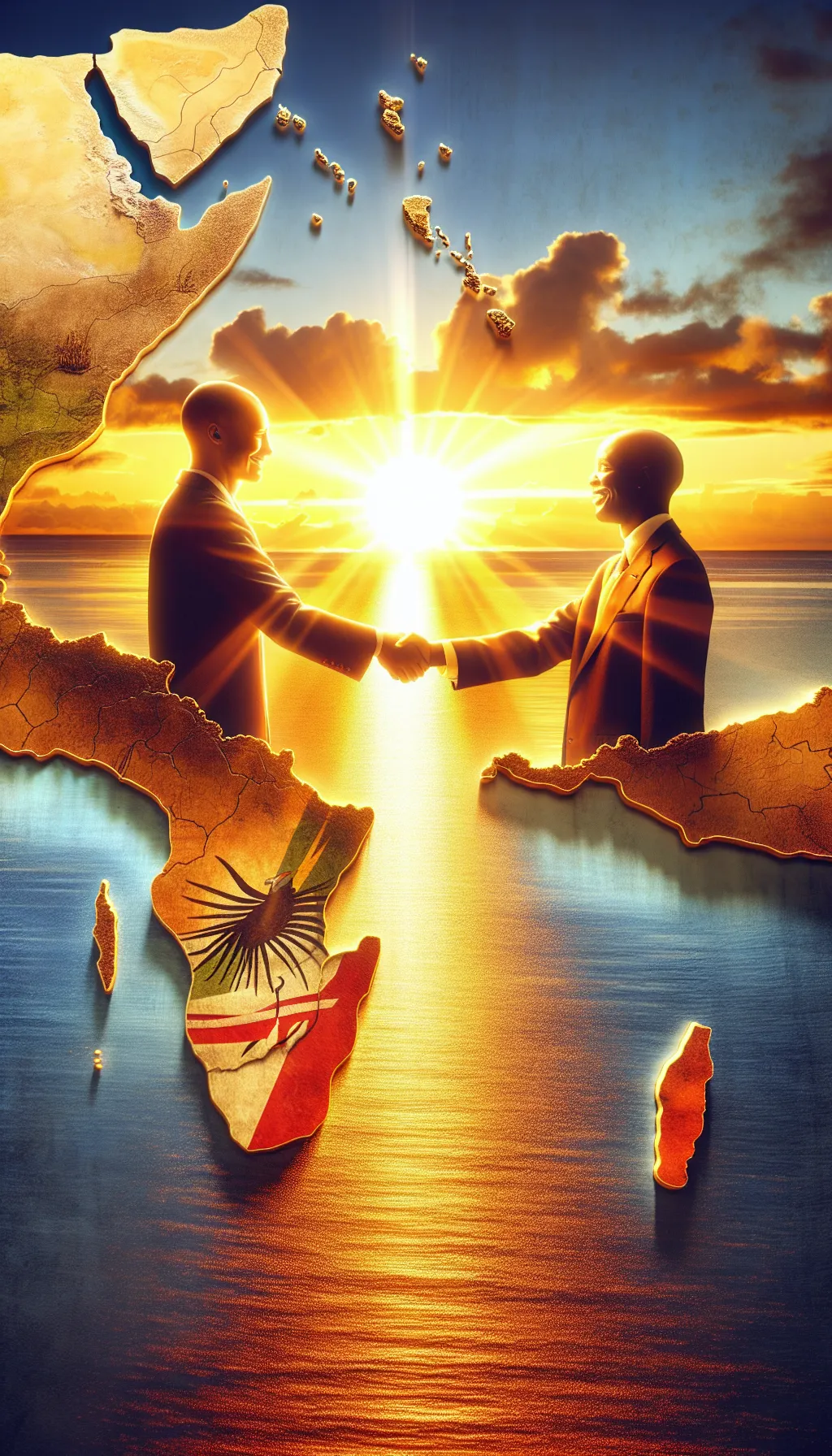Tanganyika – The Birth of the United Republic of Tanganyika and Zanzibar – April 26, 1964
TLDR;
- Event: On April 26, 1964, Tanganyika and Zanzibar united to form the United Republic of Tanganyika and Zanzibar, later renamed Tanzania on October 29, 1964.
- Background: Tanganyika had gained independence in 1961, while Zanzibar underwent a revolution in January 1964, leading to the overthrow of its sultanate.
- Leaders’ Vision: Julius Nyerere of Tanganyika and Abeid Amani Karume of Zanzibar championed the union to strengthen political and economic ties and prevent Zanzibar from becoming a communist stronghold.
- Legacy: The union created a unified Tanzania, with Zanzibar retaining semi-autonomous status, showcasing the potential for diverse regions to unite under a shared identity.
–
Story
The sun rose over the Indian Ocean, casting a golden glow on the island of Zanzibar and the mainland of Tanganyika. It was April 26, 1964, a day that would forever alter the course of East African history. As the leaders of Tanganyika and Zanzibar finalized the agreement that would unite their lands, a new political entity was proclaimed: the United Republic of Tanganyika and Zanzibar, which would later be renamed Tanzania six months later, on October 29, 1964.

The journey to this union was not without its challenges. Tanganyika, having gained independence from British colonial rule in 1961, was a land of vast savannas and rich cultural heritage. Meanwhile, Zanzibar, an island with a history of spice trade and a melting pot of cultures, had just emerged from a revolution that overthrew its Arab sultanate in January 1964. The Afro-Shirazi Party (ASP), led by Abeid Amani Karume, had taken power, but the island was still in a transitional phase with lingering political tensions.
The union was a bold move, driven by the vision of leaders like Julius Nyerere of Tanganyika and Abeid Amani Karume of Zanzibar. They saw strength in unity, a chance to forge a new identity and a stronger political and economic entity in the region. Yet, the path was fraught with complexities, as the two regions had distinct political systems, cultures, and histories.
The formalization of the union through the Articles of Union was a turning point, symbolizing hope and a shared future. It was a testament to the power of collaboration and the belief that together, they could overcome the challenges of post-colonial Africa. However, it’s important to note that Zanzibar retained semi-autonomous status, including its own government and legal system, which persists today.
Today, Tanzania stands as a testament to this vision, a nation that has navigated its diverse roots to build a unified identity. The union of Tanganyika and Zanzibar remains a powerful example of how two distinct entities can come together to create something greater than the sum of their parts.
–
| Would a different approach to the union have changed Tanzania’s path? |